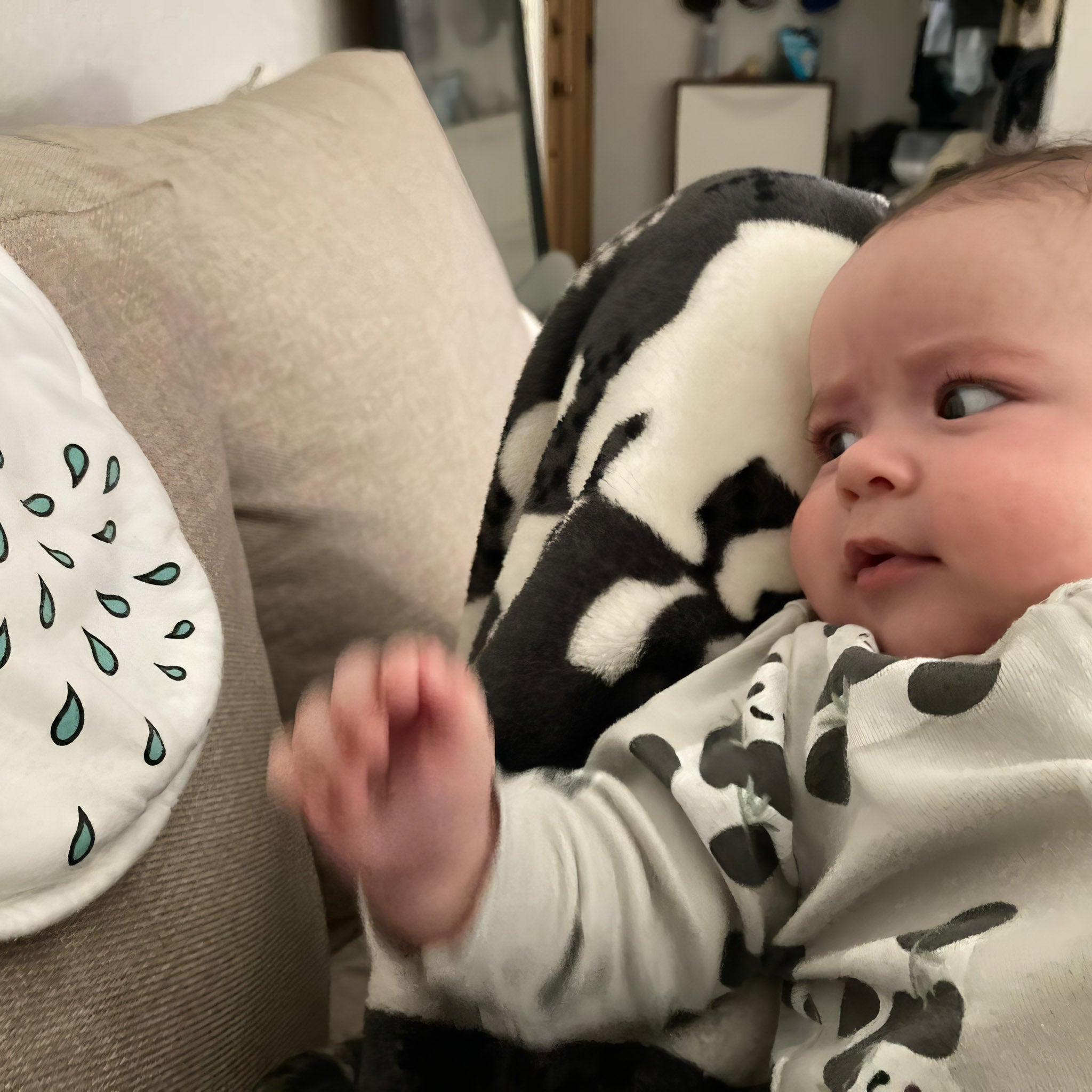
Newborn Eye Movements: What Every Parent Should Know
As a parent, it’s so easy to get lost looking deeply into your little one’s eyes. But then you notice, that eye definitely turned inward. Then the thought spiral begins: Is there something wrong with my baby’s eyes? Can they see me? Is it normal for my child’s eyes to wander around? Are they going to need surgery? Not to worry! Read more below to learn why eye movements in babies are so intriguing and how to know what is “normal” when it comes to those cute little eyes.
Why do eye movements matter?
When we communicate with someone, we naturally focus on that person’s eyes. We get so much nonverbal communication from the way we look at each other. Whether it’s the way your parent looked at you when you were in big trouble, or how a knowing glance from a best friend can make you burst out laughing, looks matter. And because of that, we tend to notice when someone’s eyes are moving in a way we don’t expect them to.
Having two eyes that move as a team is also incredibly important for daily function. When someone’s eyes wander, they may experience double vision, dizziness, headaches, or issues with balance. It can impact the way someone functions and when it comes to children, it can even influence their overall development. To sum it up, eye movements are pretty important!
How and why are newborn eye movements different?
I’ve had hundreds of parents and friends ask me about their infant’s eyes moving in an unexpected way or not being properly aligned. Irregular eye movements are not something most parents expect to see, and it can catch them off guard, leading to stress and worry. Let’s go over some basics to understand why a newborn’s eyes move the way they do.
Eye movements are incredibly complex, but we can think of it more simply by focusing on two main components that call the shots. The first is the muscle system that physically moves the eye. The second is being able to clearly see what you want to look at. For example, you take note of your baby on their playmat reaching for something because you can see your environment clearly. To get a better look at what they’re reaching for, your eyes move to point towards them. Now you can tell they’re just reaching for their pacifier! All is well! Obviously, we don’t think about each of those steps since they usually happen instantaneously and without much thought. But you needed a generally clear view of your surroundings and functional eye muscles to make that happen.
Newborn eye movements are different from adults in that they have blurry vision and their eye muscles are not fully developed yet. It’s hard for them to locate something to look at because everything is blurry, and then it’s hard to physically move their eyes smoothly and accurately to that position because those muscles haven’t had a lot of practice yet. Because of these two issues, you may see a baby’s eyes roving, wandering, or not pointed exactly where you think they should be looking. On the flip side, you will likely also see periods of good attention and tracking of an object if they can see and lock onto something they are interested in as these two systems start to improve. Check out this video of my niece looking at Smartbaby Decor's Sailboat wall art:
At any age, if an infant is given an item they can actually see, they can start building their eye muscle control skills as they track that object down. This is why black and white patterns have become so popular. Check out our blog post if you want to read more about if black and white toys really do work with infants.
Are my baby’s eye movements normal?
So, if newborn eyes can essentially move all over the place, how do you know if there is an issue? Luckily your pediatrician will be checking for this at your routine visits. At home, behaviors that are concerning include:
• An eye wandering in or out and staying in that misaligned position for minutes at a time
• Not looking towards bright lights
• Rapid back and forth shaking of the eyes
These signs may be an indication that your baby isn’t seeing as well as they should, there may be an issue with the eye muscles themselves, or they could indicate the presence of other eye health conditions. There are other more subtle things your pediatrician and eye doctor can check for, but if you’re on the lookout for these things at home, you’re already ahead of the game! Check out our blog post to read more about how to know if your child can see.
If you are unsure if your child’s eye movements are normal, take a picture or video! Trying to describe a weird eye movement to your doctor is tough, especially if it's not happening when you're with them. Take advantage of how easy it is to whip out your phone and capture what you're seeing in real time and don't be afraid to show it to your baby's doctor. I always appreciated being able to see exactly what a parent is concerned about.
Can I help my baby’s eye movements improve?
Yes! Most of their eye development will happen naturally, but as I mentioned above, giving your baby objects they can see is definitely helpful! Think of it as target practice for their eyes! Depending on your child’s age, this may be high contrast black and white pieces, or bright, colorful objects. The important thing to remember is the items that worked well in the newborn phase will become less interesting as they develop better visual skills. The same goes for toddlers, they love to try to find tiny details as they explore! So, keep things changing around them! It’s the best way to keep an infant engaged in their environment and promote their eyes and brains developing.
So, are my baby’s eye movements normal or not?
Newborn eye movements are funky! Don’t be concerned about little variances from what you’re used to seeing in older children and adults. As a baby grows, their eyes will become steadier and more predictable. Remember, the two components for good eye movements are the muscles that physically move the eye, and the clear vision that is necessary to give the eyes a distinct target to lock onto. Try using developmentally appropriate items to encourage your baby to focus and always consult with your pediatrician if you’re noticing any eye movements that make you nervous.






Leave a comment
This site is protected by hCaptcha and the hCaptcha Privacy Policy and Terms of Service apply.